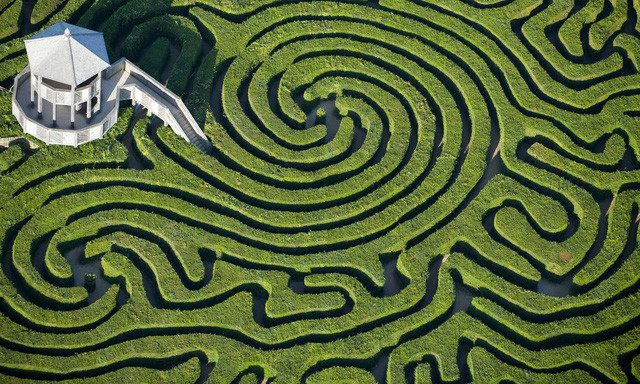Artificial intelligence defeats the humans in the maze game
Learning to navigate like humans, Google's latest artificial intelligence program, Deepmind, defeated gamers in the labyrinth game, The Guardian reported.
Context is a virtual environment, DeepMind and gamers are tasked to search for rewards through the chain of rooms, strange and random paths.
Equipped with artificial grid cell system , AI appears faster and takes advantage of the shortcut sometimes appearing in the game. Senior researcher Dharshan Kumaran said: "It acts like an animal, picking straight lines wherever possible and any shortcut occurs at any time. With grid cells, the expression of AI increases significantly. until the level of surpassing a professional player ".
Previously, scientists discovered the existence of artificial reticular cells in AI (grid cells that underlie the directional activity, identified in humans and mammals in 2005).

Labyrinth at Longleat House, Wiltshire - (Artwork: JASON HAWKES).
When training AI to move through terrain, scientists found that self-developed AI acts quite similarly to the process that takes place in specialized brain cells that develop navigation skills. After detecting artificial mesh cells, the DeepMind program team created an enhanced version and as a result it defeated professional gamers in the game.
This feat marks an important milestone in the field of artificial intelligence. Because although the AI has demonstrated superhuman ability to identify objects, Go game, Go, poker, but the ability to navigate in space is a very different challenge.
This reveals the great potential for smart programs that simulate human brain activity. In addition, this finding paves the way for computer engineers to build many models that help scientists better understand the human brain.
"Without human or animal tests, it is possible to use AI and artificial neuron networks to understand how the brain operates, performing different functions on the body" - Caswell Barry home Working neurology at University College London works together in affirmative projects.
Reported in the journal Nature (May 9), scientists describe how they built a network of deep neurons, a computer program with many artificial neuron layers that process information. Then they taught the program about navigation in the basic space, giving it some signs of speed coding, direction as in the rat brain. AI learns and responds better, can predict where it is while moving in a virtual environment.
¼ artificial neurons on each layer of the deep neuron network act as biological mesh cells. In other words, the AI has captured the strategy of exploring the world as the human brain has experienced."We were surprised that the program was running efficiently. The level of similarity was obvious," Caswell said.
Mesh cells are the basis for the process of navigation in humans and mammals. Hexagonal cells of varying size and size, even many cells overlap into invisible networks are believed to help mammals realize their location and calculate the shortest path to the item. pepper.
- Google's AlphaGo artificial intelligence defeats the world's number one chess player
- Colonel American pilots shot down by artificial intelligence
- AI has learned how to create video games just by watching people play
- Artificial intelligence defeated the European Go champion
- Google's artificial intelligence has more rapid learning skills
- By 'superhuman' computing power, the new AI system defeats world poker players
- What is Artificial Intelligence? What is AI (artificial intelligence)?
- Artificial intelligence will contribute to defeating cancer
- Intellectual game does not improve intelligence
- The first artificial intelligence possesses 'curiosity' just like humans
- Technology billionaire Elon Musk warns of artificial intelligence
- Artificial intelligence detects new humans
 The world's first sexless AI voice
The world's first sexless AI voice This cool t-shirt will make you invisible to AI
This cool t-shirt will make you invisible to AI AI can predict personality only through selfie photos
AI can predict personality only through selfie photos The world-famous chess player lost to Golaxy before, artificial intelligence 'made in China'
The world-famous chess player lost to Golaxy before, artificial intelligence 'made in China' Good news: New cancer drug discovered that causes cancer cells to 'starve'
Good news: New cancer drug discovered that causes cancer cells to 'starve'  Why do we get older when cells are always replicating?
Why do we get older when cells are always replicating?  Shocking Research: Human Memory Doesn't Exist Only in the Brain
Shocking Research: Human Memory Doesn't Exist Only in the Brain  Reasons for easy weight gain: Obesity has 'memory' and retains mechanisms in cells
Reasons for easy weight gain: Obesity has 'memory' and retains mechanisms in cells  What happens to cancer cells after they die?
What happens to cancer cells after they die?  New Breakthrough: 'Hack' Tumors, Turn Cancer Cells Into Pills
New Breakthrough: 'Hack' Tumors, Turn Cancer Cells Into Pills 